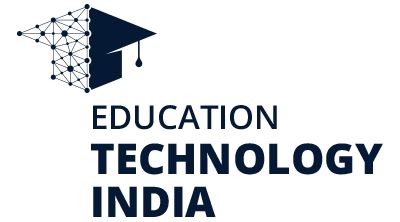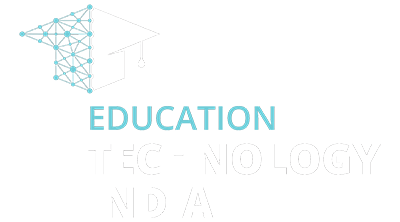
The impact of technology on our lives is evident in all areas, and education is no exception. The shift from traditional teaching tools like chalk and blackboards to interactive whiteboards and online learning platforms signifies a profound transformation in the learning process. As digital tools increasingly integrate into contemporary classrooms, it becomes apparent that technology is playing a vital role in influencing the future of education.
This article will delve into the diverse ways in which technology is improving both the teaching and learning experiences, equipping students with the skills needed for the rapidly evolving digital landscape awaiting them upon graduation. Let’s commence our exploration.
Enhanced access to education
Education has become more attainable than ever with the advent of technology. The emergence of online learning platforms and virtual classrooms has eliminated geographical and time constraints for students. Now, they have the flexibility to access educational materials and participate in classes from any location and at any time. This heightened accessibility is particularly beneficial for individuals who faced limitations in traditional education settings due to financial constraints or physical obstacles.
Furthermore, technology has facilitated the provision of specialized tools and resources for students with learning disabilities, fostering inclusivity in education. In summary, technology has significantly increased the accessibility and fairness of education for all individuals.
Individualized learning experience
Technology has facilitated tailored learning experiences for students across various age groups and skill levels. Through adaptive learning software, educators can craft personalized lesson plans that consider individual strengths, weaknesses, and preferred learning styles. This approach enhances the overall learning experience and contributes to better retention of knowledge. For example, a student facing challenges can receive additional support and supplementary materials, while a quick learner can be presented with more advanced content.
This personalized strategy ensures that each student receives the specific attention and resources necessary for their success. Furthermore, students can utilize online learning platforms and educational apps, empowering them to learn at their own pace and making the educational process more engaging and effective for all.
Improved collaboration and communication
Technology has simplified and improved collaboration and communication for both students and educators. Utilizing tools such as Google Docs, students can collaboratively work on group projects simultaneously, irrespective of their geographical locations. Interaction with peers and teachers has also been facilitated through diverse digital platforms, creating a more engaging learning environment.
Furthermore, technology has paved the way for virtual classrooms, webinars, and video conferencing, eliminating geographical constraints and enabling students from various parts of the globe to come together. This fosters cultural exchange and diversity in the educational experience. In summary, technology has elevated the levels of collaboration and communication within the student community, between students and teachers, and among educational institutions.
Interactive and Engaging Lessons
The incorporation of technology has heightened the interactivity and engagement levels in student learning. Multimedia tools like videos, animations, and games enable students to grasp complex concepts in an entertaining and interactive manner, enhancing not only the enjoyment of learning but also retention and comprehension.
Additionally, the advent of virtual reality (VR) technology has introduced innovative avenues for immersive learning experiences. This allows students to delve into diverse scenarios and environments that were previously beyond the scope of a conventional classroom setting. Technology has revolutionized the delivery of lessons, making them more interactive and captivating for students across various age groups.
Availability of an abundance of information
The internet has placed a wealth of information within easy reach, particularly advantageous for students. With a few clicks, students can explore a vast array of information on any subject, ranging from academic articles to educational videos. This not only broadens their knowledge but also fosters independent learning and the development of critical thinking skills.
Digital libraries and online databases offer students an extensive pool of resources that they can leverage for research projects or assignments. Additionally, technology enables teachers to introduce guest speakers or experts from diverse locations worldwide, providing students with direct learning opportunities from professionals in their respective fields of study.
Learning opportunities in the real world
Access to real-world learning experiences has been facilitated by technology for students. Utilizing virtual simulations and augmented reality (AR) technology, students can engage in hands-on learning within the confines of the classroom. For instance, medical students can simulate surgeries using virtual platforms, and geography students can virtually explore diverse landscapes through AR technology.
Furthermore, online platforms have enabled students to partake in international programs and internships, offering them a global outlook and practical experience that will prove advantageous in their future professional endeavors. Technology has unveiled novel pathways for real-world learning, equipping students with the skills necessary to navigate the challenges of the contemporary world.
Readiness for the digital workforce
In the contemporary digital era, it is imperative for students to possess familiarity with technology and its diverse applications. Proficiency in coding, programming, and navigating various software and tools has evolved into a crucial necessity in the workforce.
As technology seamlessly integrates into education, students gain enhanced readiness to navigate the dynamic job market, acquiring new skills as demands evolve. Furthermore, the incorporation of technology in education fosters critical thinking, problem-solving, and creativity – skills highly prized in the digital workforce. Technology serves as a preparatory tool, shaping students into valuable contributors to the global economy and positioning them for the jobs of the future.
Enhanced efficiency and productivity
Technology has heightened efficiency and productivity in education, benefiting both educators and students. Through digital tools, teachers can automate tasks like grading and attendance, enabling them to allocate more time to lesson planning and individual student interactions.
Furthermore, online learning platforms facilitate self-paced learning, allowing students to progress at their own pace without falling behind. This not only boosts productivity but also enables students to cover more material in a shorter timeframe. Additionally, technology simplifies the storage and organization of educational resources, enhancing accessibility for both students and teachers.
The pivotal role of technology in shaping the future of education is evident. It has rendered learning more accessible, personalized, and engaging, fostering collaboration, critical thinking, and practical skills crucial for success in the digital realm. Continuous technological advancements suggest ongoing innovation in education, preparing students for the challenges and opportunities ahead. Hence, educators and institutions should embrace technology effectively to unlock its full potential in shaping the future of education.






